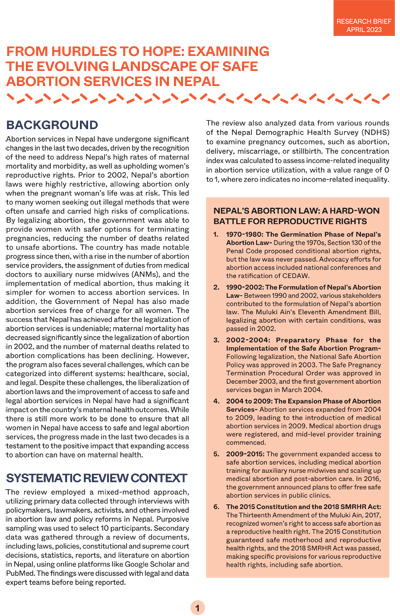 BACKGROUND
BACKGROUND
Abortion services in Nepal have undergone significant changes in the last two decades, driven by the recognition of the need to address Nepal’s high rates of maternal mortality and morbidity, as well as upholding women’s reproductive rights. Prior to 2002, Nepal’s abortion laws were highly restrictive, allowing abortion only when the pregnant woman’s life was at risk. This led to many women seeking out illegal methods that were often unsafe and carried high risks of complications. By legalizing abortion, the government was able to provide women with safer options for terminating pregnancies, reducing the number of deaths related to unsafe abortions. The country has made notable progress since then, with a rise in the number of abortion service providers, the assignment of duties from medical doctors to auxiliary nurse midwives (ANMs), and the implementation of medical abortion, thus making it simpler for women to access abortion services. In addition, the Government of Nepal has also made abortion services free of charge for all women. The success that Nepal has achieved after the legalization of abortion services is undeniable; maternal mortality has decreased significantly since the legalization of abortion in 2002, and the number of maternal deaths related to abortion complications has been declining. However, the program also faces several challenges, which can be categorized into different systems: healthcare, social, and legal. Despite these challenges, the liberalization of abortion laws and the improvement of access to safe and legal abortion services in Nepal have had a significant impact on the country’s maternal health outcomes. While there is still more work to be done to ensure that all women in Nepal have access to safe and legal abortion services, the progress made in the last two decades is a testament to the positive impact that expanding access to abortion can have on maternal health.

